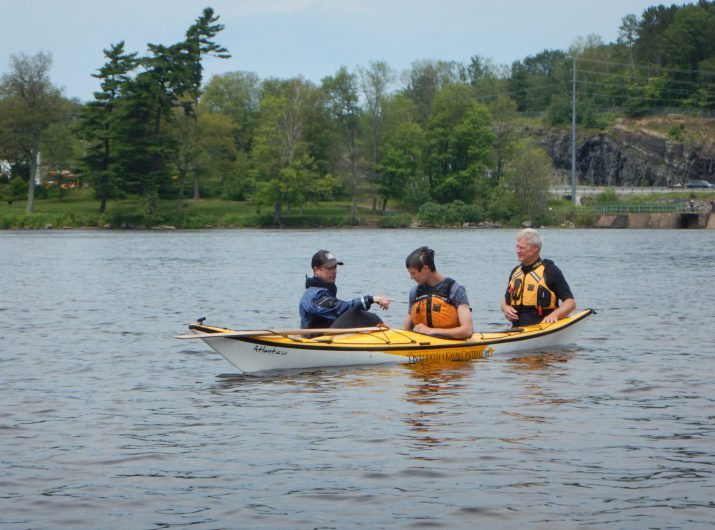Over my years of talking to people who gave up kayaking, many of them have some sort of story along the following lines, “I tried kayaking once but it flipped over and I got trapped inside of it. I thought I was going to die!”
Taking the time to teach the wet exit properly and professionally is extremely important because the reality is, if the wet exit exercise goes wrong for the student and they panic, they might not ever get in a kayak again!
Here are a couple tips to help make it easier and less stressful for both your student and yourself:
- Before the students first attempt, stand right beside student with a hand on boat. Reassure the student that you are there for both emotional and physical support in case anything goes wrong.
- I like to get them to verbalize back to me the full steps to a wet exit. This will help them work out the proper steps of their first exit. It will also take their mind off their fear and focus on the task at hand. Finally, it will enable you to get an idea of their mindset and judge if they fully understand.
- Once they flip over, if you lift the bow up slightly (only an inch or two), it will enable the student to come out of the boat with ease. Remember you want them to come out for the first time as easy as possible. Getting stuck the first time is the worst possible outcome. Future attempts can focus on things like getting out under normal conditions or banging on the hull, etc.
- The student’s first attempt should only focus on flipping over and coming to the surface, for future attempts you can add components like hanging out, banging on hull, sliding hands back and forth, etc.
- Reassure the nervous students that everybody else in the class is also nervous. Anybody who isn’t nervous the first time they try it is lying…
- Any sign of panic, stop and get your student to calm down and come back to it when they are ready. Take your time with it.
- Remember to come back and review the wet exit throughout your lesson during the day. If you have the time to practice it great, if not, make sure that you talk about the steps on how to get out. Even though they practiced it earlier in the day, if they flip and panic underwater, they can easily forget the steps. There is lots of documented and anecdotal evidence of this accident during kayaking lessons.
- Finally, take the exercise seriously but at the same time, don’t focus on all the things that can go wrong. Students that are slightly nervous could easily panic so try to keep the atmosphere as light as possible.
What do you think? Got a tip to correct or add? Comment below.
